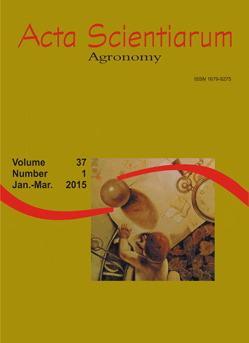<b>Morphological and chemical characteristics of onion plants (<i>Allium cepa</i> L.) associated with resistance to onion thrips
Abstract
Thrips tabaci Lindeman is the main pest of onion crops, and chemical control is the main method adopted by farmers. Alternative control methods should be prioritised to reduce the amount of insecticides used. Resistant cultivars are one efficient way to control thrips in the field. Our aim was to assess the influence of morphological and chemical characteristics of seven onion cultivars and their resistance to T. tabaci. The number of thrips and the morphological and chemical characteristics of the plants were assessed. Among the evaluated cultivars, Alfa São Francisco RT, BR 29 and Sirius showed resistance to T. tabaci, as indicated by the lower number of thrips observed during the cycle (64, 87, and 74 thrips, respectively). Morphological and chemical characteristics were associated with onion’s resistance to T. tabaci. For the cultivar Alfa São Francisco RT, a wider central angle (16.4°), a thinner cuticle, a larger amount of epicuticular waxes, and stomata on the surface of leaves accounted for resistance. For the cultivars BR 29 and Sirius, the resistance was likely due to the presence of resistance-conferring substances or high amounts of some component in the chemical composition of plants.
Downloads
DECLARATION OF ORIGINALITY AND COPYRIGHTS
I Declare that current article is original and has not been submitted for publication, in part or in whole, to any other national or international journal.
The copyrights belong exclusively to the authors. Published content is licensed under Creative Commons Attribution 4.0 (CC BY 4.0) guidelines, which allows sharing (copy and distribution of the material in any medium or format) and adaptation (remix, transform, and build upon the material) for any purpose, even commercially, under the terms of attribution.




















































